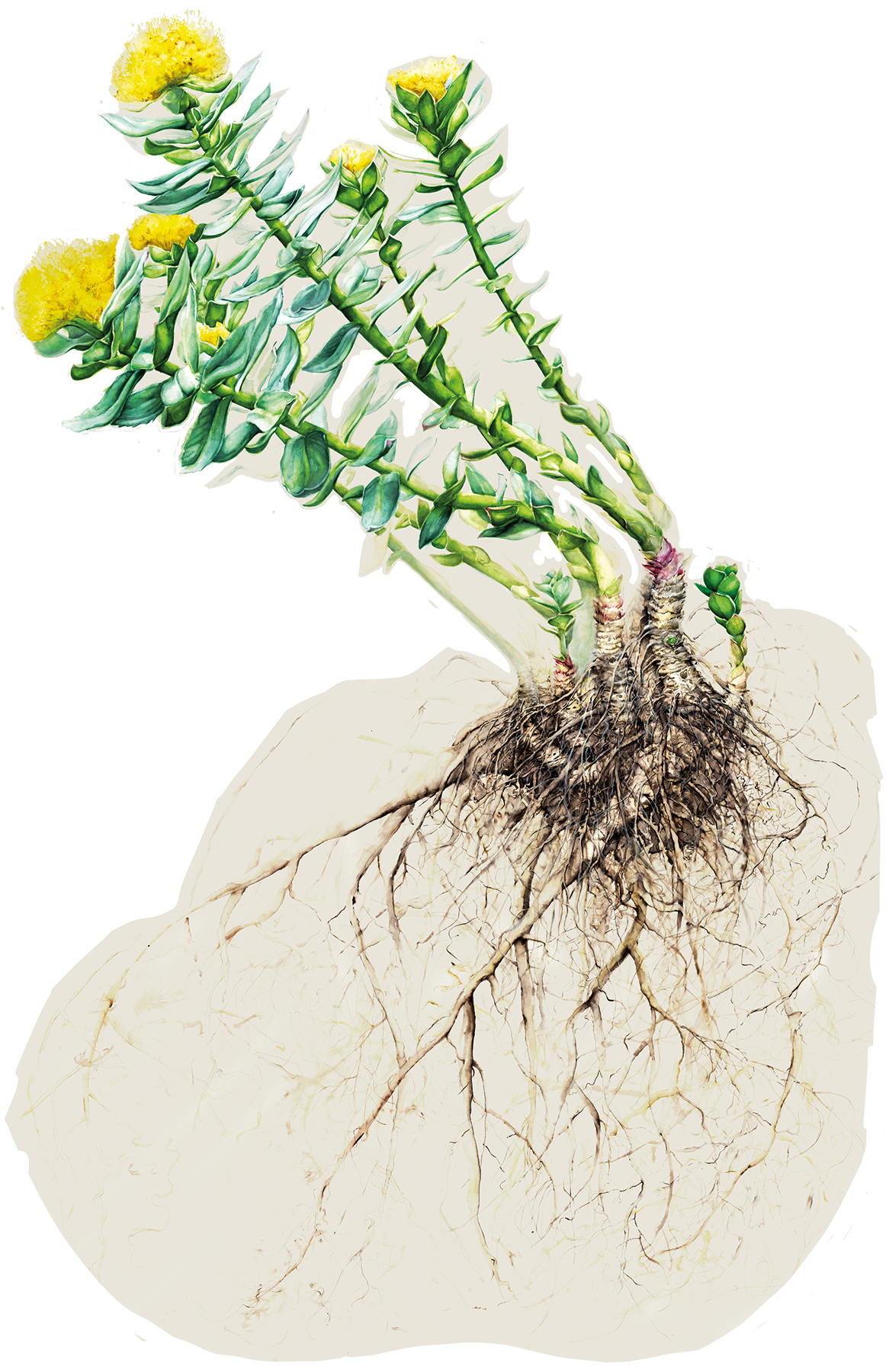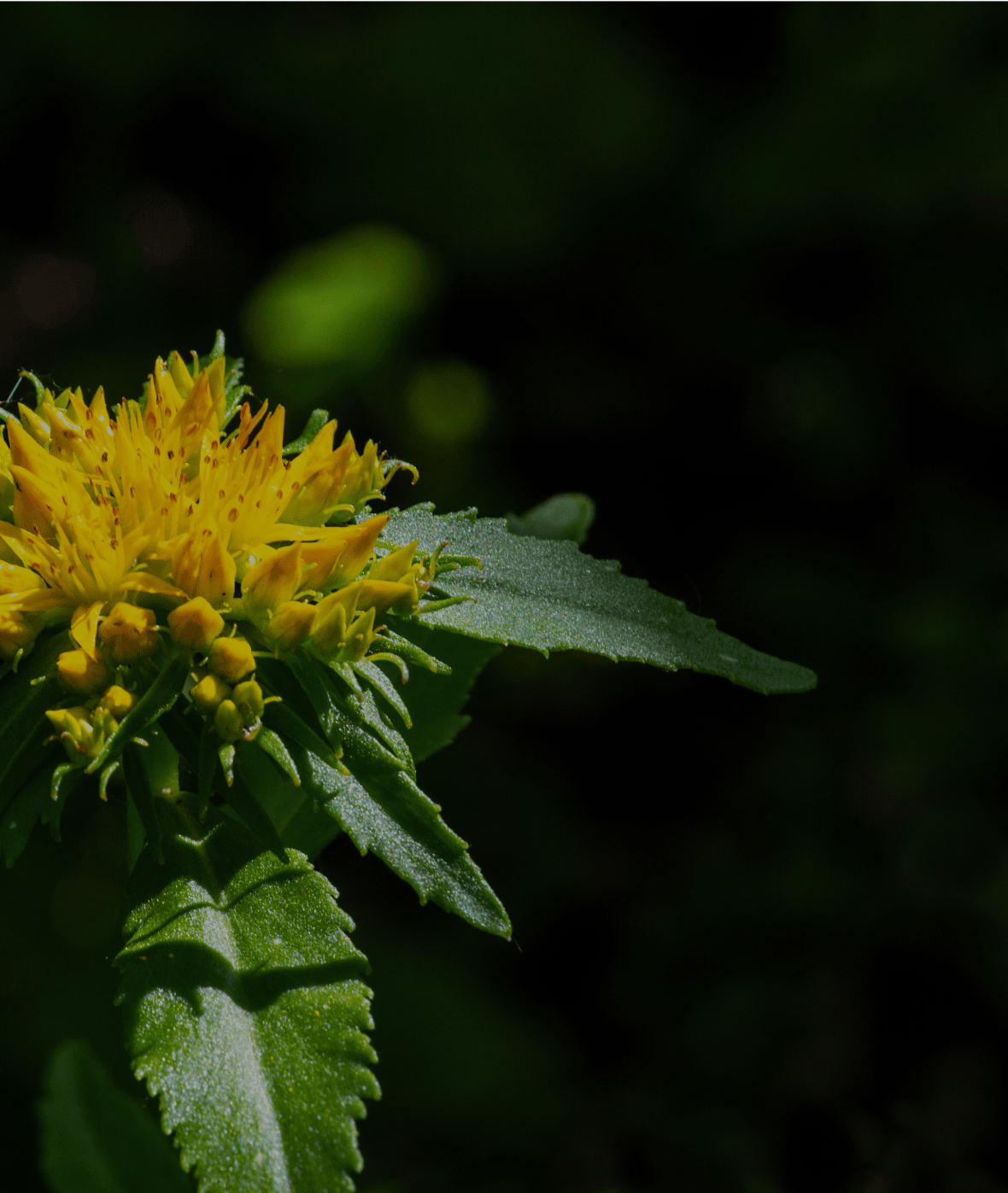Rhodiola rosea
Known for boosting physical and mental stamina and for its remarkable longevity-enhancing properties, the long-forgotten Viking’s “Golden Root” is making a resounding comeback into modern herbal medicine.


A sourcing nightmare
With potent therapeutic benefits that strongly resonate with contemporary health concerns, the Golden Root is emerging as one of the most promising botanicals in the nutraceutical landscape.
But just like other valuable and highly sought-after botanicals, the supply of Rhodiola reflects a broader critical trend : as its popularity soars, it brings with it grave concerns about sustainability and the viability of its natural sources.
The ergogenic of the vikings
Rhodiola rosea, deeply rooted in the traditional medicine of the circumpolar regions of Scandinavia, Russia, and Northern Asia, is renowned for its extensive health benefits and longevity-enhancing properties. For centuries, this Arctic rose has been a staple in herbal concoctions, valued for its ability to increase physical endurance and combat asthenia and altitude sickness.
Historically, one of Rhodiola's earliest known medicinal applications was in preventing scurvy, particularly vital during the harsh Siberian winters. Its roots and aerial parts were among the rare sources of Vitamin C available in the midst of Siberian winter, making Rhodiola an indispensable resource for populations living through the extreme climates of the northern hemisphere.
It is its use by the Vikings, however, that made Rhodiola into the legendary herb it is today. Discovered during their expeditions to Iceland, Rhodiola was first used to cure wounds. Over time, this golden root became the secret to the Viking’s mythical vigor, and was revered as a sacred, Gods-given medicinal herb, believed to extend life up to 200 years. Its roots were used as a stimulant to enhance resistance to stress and fatigue in combat, and helped Viking valiant warriors sustain physical endurance during their strenuous raid campaigns throughout Europe.
In traditional Mongolian pharmacopoeias, Rhodiola was also esteemed for its efficacy in treating nervous system disorders, depression, and anemia, and was recommended for relieving gastrointestinal disorders, infections, and inflammation. In Siberia, the herb was celebrated for its fertility-enhancing properties and was customarily presented to young couples as a gift before marriage.

The adaptogen of the cosmonauts
Though it was already a part of traditional Russian and Nordic pharmacopoeias, Rhodiola became even more significant for modern western medicine in the last century.
During the tense Cold War era of the 1960s, the Soviet Union brought Rhodiola back into the spotlight: they undertook extensive research into its therapeutic benefits, with a keen interest in its potential to boost mental and physical performance. It was investigated in the context of space exploration, to enhance cosmonauts cognitive functions and endurance to fatigue, but also in sports, to boost Russian Olympic athletes’ performance and competitiveness.
Soviet experiments yielded promising results, demonstrating Rhodiola's efficacy in improving memory, learning, and alertness, particularly under acute stress conditions. It was through this pioneering research that Rhodiola rosea was first recognized as an adaptogen, a substance capable of increasing the body's resistance to stressors.
Though documented extensively in Slavic and Scandinavian languages, Rhodiola rosea's benefits remained relatively unknown in the West until recently. However, in the last 10 years, the growing recognition of Rhodiola’s potential in combating stress and fatigue, particularly relevant to today's health concerns, has rapidly elevated the plant’s popularity and made it one of the most promising ingredients in contemporary herbal medicine.

Brown, R. P., Gerbarg, P. L., & Ramazanov, Z. (2002). Rhodiola rosea. A phytomedicinal overview. HerbalGram, 56, 40-52.
Panossian, A., Wikman, G., & Sarris, J. (2010). Rosenroot (Rhodiola rosea): traditional use, chemical composition, pharmacology and clinical efficacy. Phytomedicine, 17(7), 481-493.
Hung, S.K., Perry, R., & Ernst, E. (2011). The effectiveness and efficacy of Rhodiola rosea L.: a systematic review of randomized clinical trials. Phytomedicine, 18(4), 235-244.
Vastag, B. (2007). Warming to a cold war herb: Soviet secret finds its way west. Science News, 172(12), 184-189.
Brinckmann, J.A., Cunniungham, A.B., & Harter, D.E. (2021). Running out of time to smell the roseroots: Reviewing threats and trade in wild Rhodiola rosea L. Journal of Ethnopharmacology, 269, 113710.
Elameen A., Kosman V.M., Thomsen M., Pozharitskaya O.N., Shikov A.N. (2020). Variability of Major Phenyletanes and Phenylpropanoids in 16-Year-Old Rhodiola rosea L. Clones in Norway. Molecules. 2020 Jul 30;25(15):3463. doi: 10.3390/molecules25153463.

Fjord Rhodiola
Inspired by Nordic tradition, BOTALYS’ Fjord Rhodiola is a testament to our technological expertise and our commitment to botanical preservation. It is the result of 4 years of relentless R&D to develop the ideal conditions for this arctic treasure to feel at home in our process.
By meticulously recreating the growing conditions of Rhodiola's natural habitat, BOTALYS, has achieved the impossible: to produce a potent European Rhodiola rosea, sustainably and at large scale, with a molecular profile equivalent to that of a 15-year-old wild Nordic specimen.
Through the development of this unique Fjord Rhodiola, BOTALYS’ pioneering work in botanical sourcing innovation offers a sustainable solution to address today’s growing demand for this precious plant. But it could also be the key to securing access to this crucial resource for human health for generations to come.
